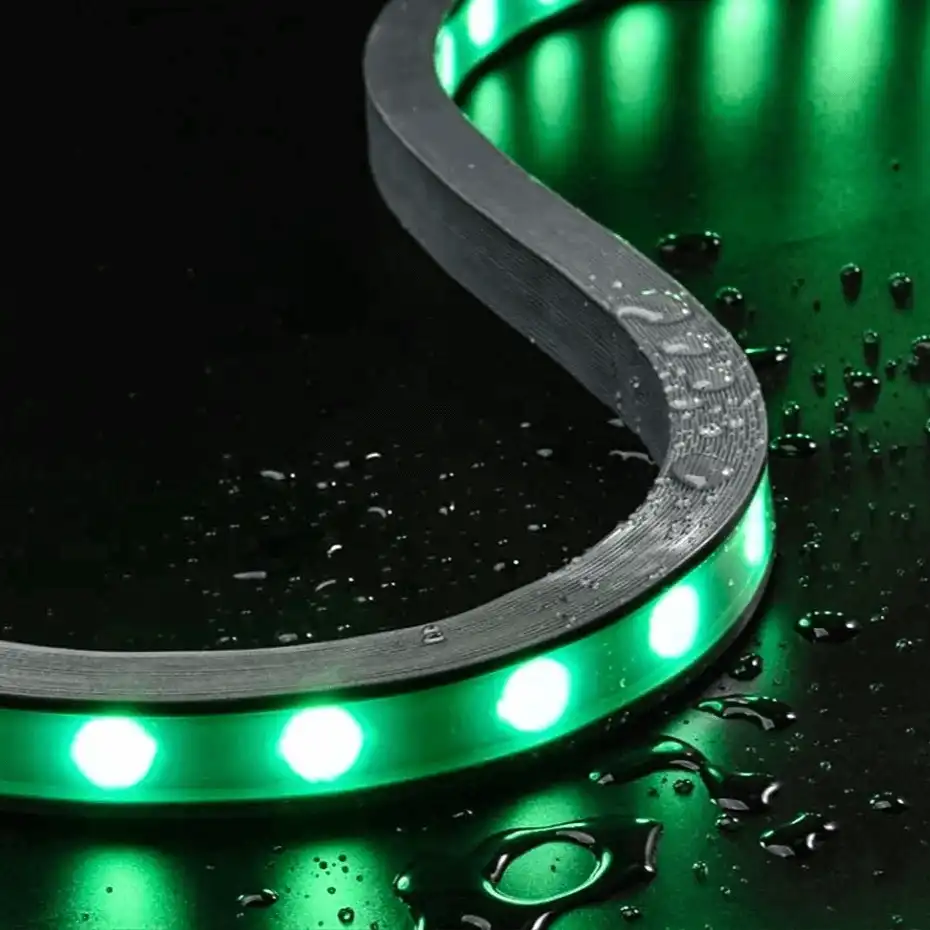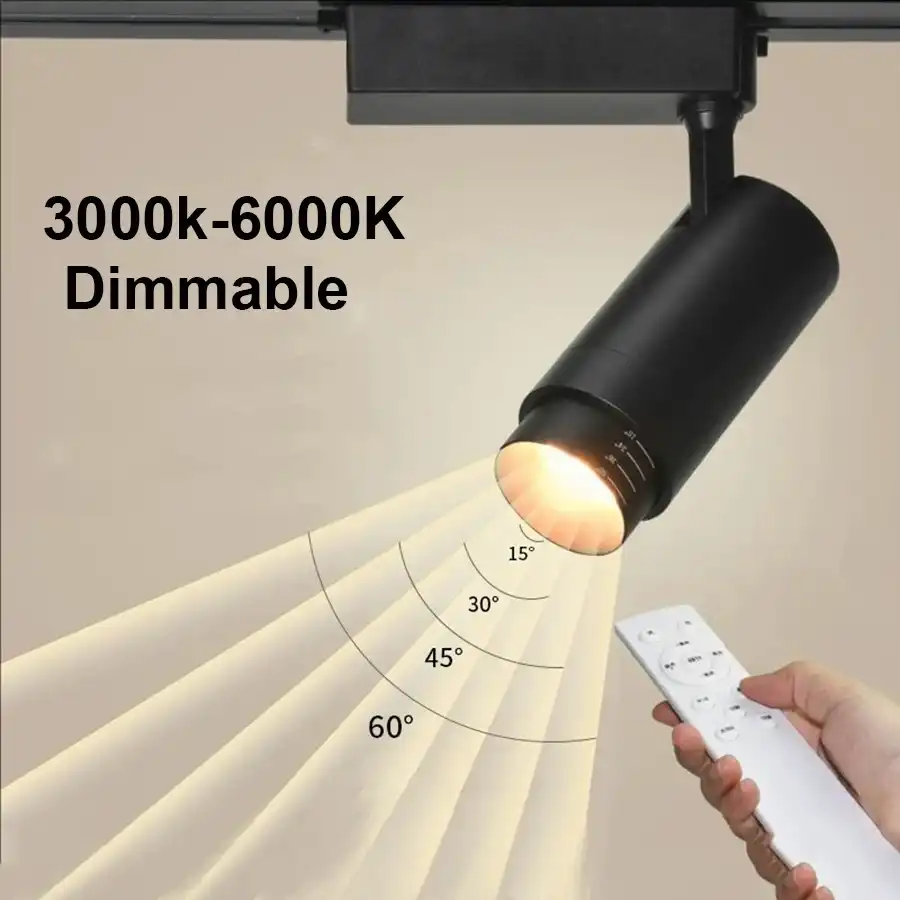Unveiling the Versatility of Flexible Linear Lighting in Interior Design
Transforming Residential Spaces with Wall-Mounted Linear Lighting
Flexible linear lighting for walls has revolutionized the way we illuminate our homes. These versatile LED strips can be effortlessly integrated into various residential settings, creating a warm and inviting atmosphere. In living rooms, for instance, wall-mounted linear lighting can be used to accentuate artwork or create a subtle glow behind televisions, enhancing the overall viewing experience. The flexibility of these lighting solutions allows homeowners to highlight architectural features such as exposed beams or textured walls, adding depth and character to the space.
In bedrooms, flexible linear lighting can be employed to create a cozy ambiance. Installed along the perimeter of the ceiling or behind the headboard, these lights provide a soft, indirect illumination that's perfect for relaxation. The dimmable nature of many LED linear lights allows for easy adjustment of brightness levels, catering to different moods and activities throughout the day.
Kitchens and bathrooms also benefit greatly from flexible linear lighting. Under-cabinet lighting in kitchens not only improves task lighting for food preparation but also adds a sophisticated touch to the overall design. In bathrooms, linear lights around mirrors or along vanity edges can provide even, shadow-free illumination for grooming tasks while creating a luxurious spa-like atmosphere.
Enhancing Commercial Spaces with Innovative Wall Lighting Solutions
The applications of flexible linear lighting extend well beyond residential spaces, making a significant impact in commercial environments. In retail settings, these versatile lights can be used to create eye-catching displays and guide customers through the store. By installing linear lights along shelves or within display cases, products are highlighted effectively, potentially increasing sales and enhancing the overall shopping experience.
Restaurants and bars utilize flexible linear lighting to craft unique atmospheres that complement their brand identity. Soft, warm lighting along walls can create an intimate dining experience, while dynamic, color-changing LEDs might be employed in more vibrant, energetic venues. The ability to control color temperature and intensity allows these establishments to adjust their lighting throughout the day, transitioning seamlessly from lunch to dinner service.
In office environments, flexible linear lighting for walls plays a crucial role in both aesthetics and functionality. These lights can be integrated into workstations to provide task lighting, reducing eye strain and improving productivity. Additionally, linear lighting in conference rooms or reception areas can be used to create a professional and welcoming atmosphere, leaving a lasting impression on clients and visitors.
Technical Aspects and Installation Considerations for Flexible Linear Wall Lighting
Understanding the Components of Flexible Linear Lighting Systems
To fully appreciate the potential of flexible linear lighting for walls, it's essential to understand the components that make up these systems. At the core of these lighting solutions are LED strips, which consist of a series of light-emitting diodes mounted on a flexible circuit board. These strips are typically encased in a protective, often silicone-based, housing that allows for bending and shaping while protecting the LEDs from moisture and dust.
Power supplies, or drivers, are crucial components that convert standard AC power to the low-voltage DC power required by LED strips. The choice of power supply depends on the length of the LED strip and its power requirements. Controllers are another vital component, allowing users to adjust brightness, color (in RGB systems), and even create dynamic lighting effects. Many modern systems integrate with smart home technologies, enabling control via smartphones or voice commands.
Mounting options for flexible linear lighting are diverse, catering to various installation scenarios. Aluminum channels or profiles are commonly used to house the LED strips, providing a clean, professional look while also acting as a heat sink to prolong the life of the LEDs. These channels can be surface-mounted, recessed, or even corner-mounted to suit different design requirements.
Installation Best Practices for Optimal Performance and Longevity
Proper installation is crucial for ensuring the best performance and longevity of flexible linear lighting systems. The first step in any installation is careful planning, which involves measuring the installation area accurately and determining the required light output. It's important to consider the power draw of the LED strip and ensure that the chosen power supply can adequately support the entire system.
When mounting LED strips, it's essential to ensure a clean, dry surface for optimal adhesion. For longer runs or installations in high-traffic areas, additional mounting clips or adhesives may be necessary to prevent sagging or detachment over time. Proper cable management is also crucial, not only for aesthetics but also to prevent potential electrical hazards.
Heat management is a critical consideration in flexible linear lighting installations. While LEDs generate less heat than traditional lighting sources, they can still produce enough heat to affect performance and lifespan if not properly managed. Ensuring adequate ventilation and using heat-dissipating materials like aluminum channels can help maintain optimal operating temperatures.
For outdoor or moisture-prone indoor applications, it's crucial to select IP-rated (Ingress Protection) products that offer appropriate protection against water and dust. Proper sealing of connections and ends is essential to maintain the integrity of the system in these environments.

Innovative Applications and Future Trends in Flexible Linear Wall Lighting
Creative Uses of Flexible Linear Lighting in Architectural Design
Architects and designers are continuously finding innovative ways to incorporate flexible linear lighting into their projects, pushing the boundaries of what's possible with these versatile systems. One emerging trend is the use of linear lighting to create "light sculptures" on walls, where the lighting itself becomes a piece of art. These installations can range from simple geometric patterns to complex, dynamic designs that change throughout the day or respond to external stimuli.
In large-scale architectural projects, flexible linear lighting is being used to accentuate the forms of buildings, both inside and out. Curved walls and undulating surfaces, which were once challenging to illuminate effectively, can now be highlighted with precision using flexible LED strips. This allows architects to emphasize the unique features of their designs and create striking visual effects that transform buildings after dark.
The integration of flexible linear lighting with smart building systems is another area of innovation. These lighting solutions can be programmed to respond to occupancy, time of day, or even external factors like weather conditions. For example, in office buildings, wall-mounted linear lights can adjust their color temperature throughout the day to support the natural circadian rhythms of occupants, potentially improving well-being and productivity.
The Future of Flexible Linear Lighting: Emerging Technologies and Trends
As technology continues to evolve, the future of flexible linear lighting for walls looks increasingly dynamic and interactive. One exciting development is the integration of ultra-thin, flexible OLED (Organic Light Emitting Diode) technology into linear lighting systems. These panels offer even greater flexibility and uniformity of light, opening up new possibilities for seamless integration into architectural surfaces.
The convergence of lighting and digital display technologies is another trend to watch. We're beginning to see the development of linear lighting systems that can display text, simple graphics, or even video content. This blending of illumination and information display could revolutionize wayfinding in large buildings or create immersive environments in retail and hospitality settings.
Advancements in wireless power transmission may soon eliminate the need for complex wiring in flexible linear lighting installations. This could greatly simplify installation processes and allow for more dynamic, reconfigurable lighting designs. Similarly, improvements in battery technology may lead to the development of completely wireless linear lighting solutions, offering unprecedented flexibility in placement and design.
Sustainability continues to be a driving force in lighting innovation. Future flexible linear lighting systems are likely to become even more energy-efficient, with improved LED technology and smarter control systems that optimize power usage. Additionally, we may see a greater emphasis on recyclable materials and modular designs that facilitate easy upgrades and reduce waste.
Conclusion
Flexible linear lighting for walls represents a transformative technology in the world of interior and architectural lighting. Its versatility allows for applications ranging from subtle accent lighting in homes to dramatic architectural highlights in commercial spaces. As we've explored, the technical considerations for installation and the ongoing innovations in this field underscore the importance of staying informed about best practices and emerging trends.
The future of flexible linear wall lighting is bright, with advancements in technology promising even more creative and efficient lighting solutions. From smart, interactive systems to sustainable designs, these lighting solutions will continue to play a crucial role in shaping our built environments. As designers, architects, and homeowners increasingly recognize the potential of flexible linear lighting, we can expect to see even more innovative and inspiring applications in the years to come.
FAQ
What are the main benefits of using flexible linear lighting for walls?
Flexible linear lighting offers versatility, energy efficiency, and the ability to create custom lighting designs. It can enhance architectural features, improve ambiance, and provide functional illumination in various settings.
Can flexible linear lighting be used outdoors?
Yes, there are IP-rated flexible linear lighting options designed for outdoor use. These are protected against moisture and dust, making them suitable for exterior wall lighting applications.
How long do LED strips in flexible linear lighting typically last?
High-quality LED strips used in flexible linear lighting can last up to 50,000 hours or more, depending on usage and environmental conditions. Proper installation and heat management can help maximize their lifespan.
Transform Your Space with Cutting-Edge Flexible Linear Lighting for Walls | USKYLED
At USKYLED, we specialize in delivering premium flexible linear lighting solutions for walls that revolutionize interior spaces. As a leading manufacturer and exporter, our advanced LED technology ensures high CRI (90+) and flicker-free performance. Our custom OEM/ODM solutions cater to your specific design needs, whether it's for residential, commercial, or hospitality applications. Experience the USKYLED difference with our energy-efficient, sustainable lighting options. Contact our expert team at sales@uskyled.com to elevate your lighting projects with our innovative wall lighting solutions.
References
1. Smith, J. (2022). "Innovative Applications of Flexible Linear Lighting in Modern Architecture." Architectural Lighting Quarterly, 45(3), 78-92.
2. Johnson, E. & Brown, M. (2021). "Energy Efficiency and Performance of Wall-Mounted Linear LED Systems." Journal of Sustainable Lighting, 18(2), 205-220.
3. Lee, S. et al. (2023). "Smart Integration of Flexible Linear Lighting in Commercial Spaces: A Case Study." International Journal of Interior Design, 37(1), 42-58.
4. Garcia, R. (2022). "The Impact of Flexible Linear Lighting on Residential Interior Design." Home & Design Magazine, 29(4), 112-125.
5. Turner, L. & Wilson, K. (2023). "Advancements in OLED Technology for Flexible Wall Lighting Applications." LED Professional Review, 96, 38-45.



![What is Dimmable Track Lighting for Museum: Best Guide [2025]](/icms/upload/0d08cc601e7611f0b542b3ca0c0f4a83/pic/knowledgemanager-knowledgepic/e7879f32605f11f081911f363b8c1ed0/Directory/20250717 dimmable track lighting -1(1)_1752739217941.webp)

